Beacon of Hope - A Learning Report of 14-day Permaculture Design Course
For those who are concerned about nature, you have probably heard of the term “Permaculture”. The word is coined from “permanent”, “culture” and “agriculture”, which was developed for the sustainable living movement initiated by ecologists Bill Mollison and his student David Holmgren in the 1970s. Permaculture is not a farming technique, but a set of design principles and practices for sustainable living. It integrates the principles of various disciplines, including Earth Sciences, Ecology and Agronomy, and it aims to achieve Earth Care, People Care and Fair Share (the three ethics). Permaculture could be the solution to the most pressing question: how to live sustainably and in harmony with our rapidly degrading planet?
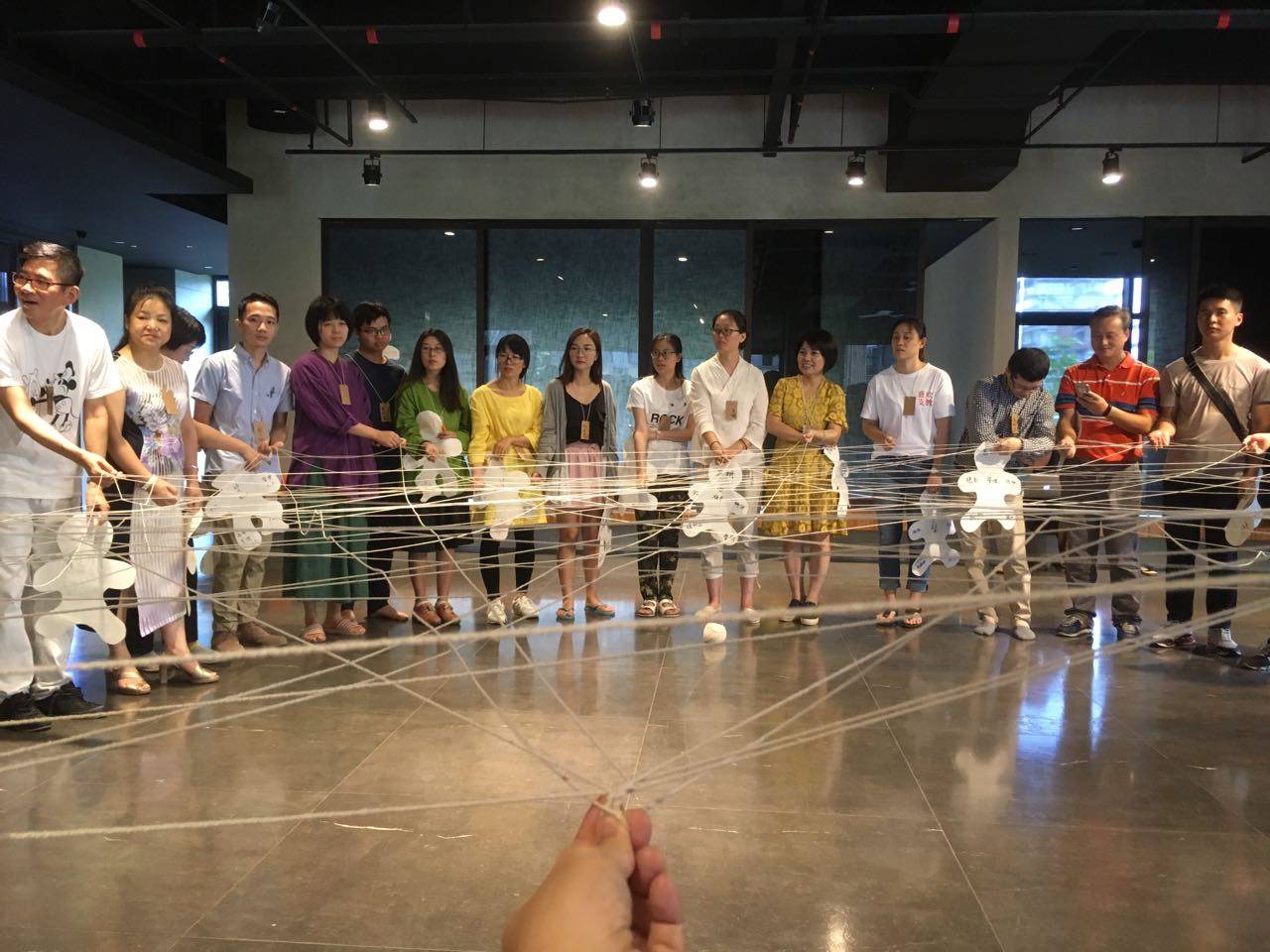 Then we were asked to link with people related to us with a rope and surprisingly…I was linked with SO! MANY! PEOPLE!
Then we were asked to link with people related to us with a rope and surprisingly…I was linked with SO! MANY! PEOPLE!I was amazed by such a complex network among this diverse group of people. We have learned that as long as the network is complex enough, no one would fall even some of us let go of the rope, just like the strong resilience we find in a healthy ecosystem. In the following days of the course, we keep learning from the Mother Nature, looking for linkages in nature and among different elements, and applying them in our daily lives.
Waste is just a resource in the wrong place
In Permaculture Design, waste equals resource. For example, approximately one third of the municipal waste is leftover foods. Have you ever think of where can they end up besides landfills? Have you ever imagine leftovers could be turned into food again? Here is an example: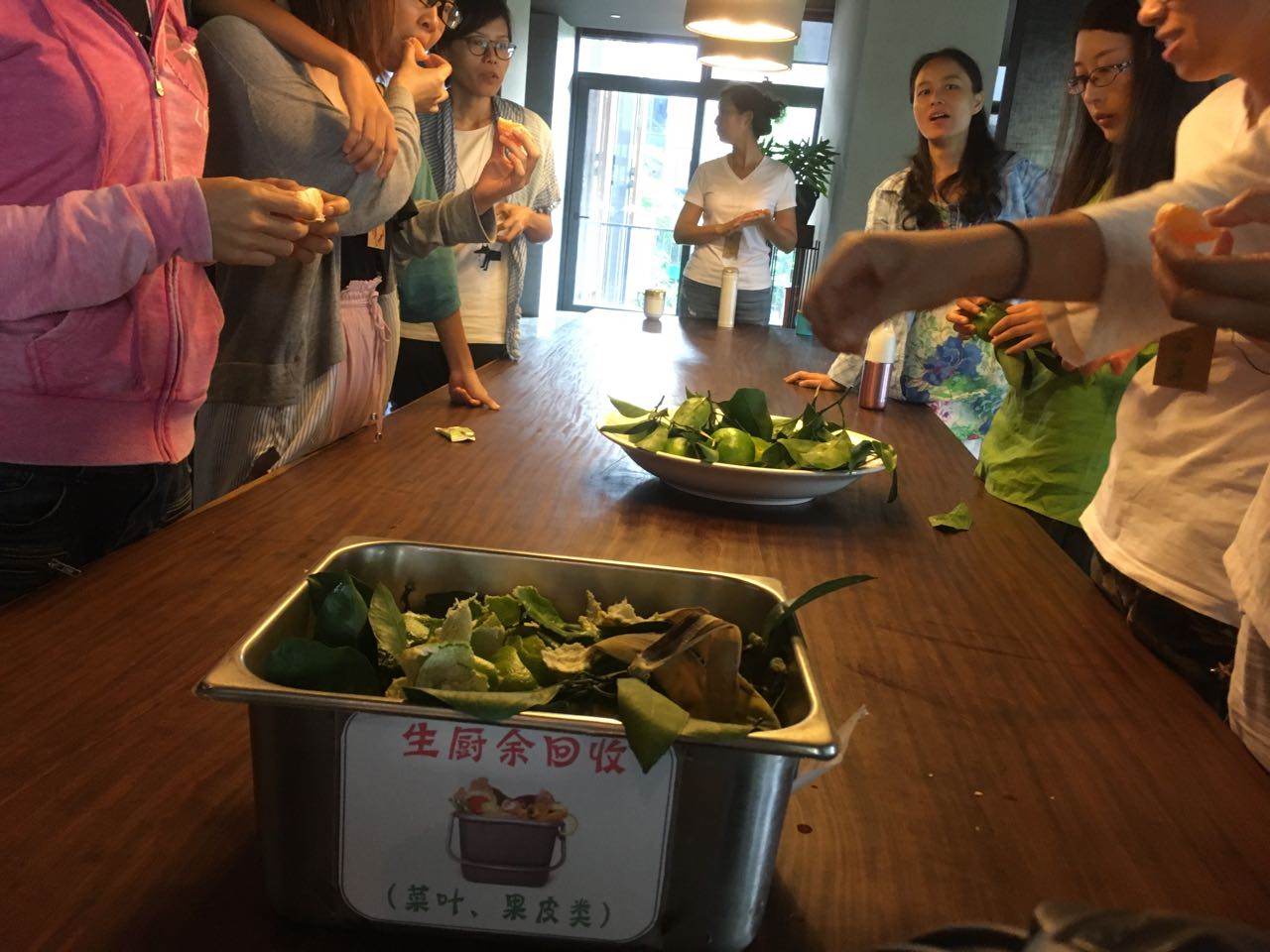 Citrus peels from our tea break
Citrus peels from our tea break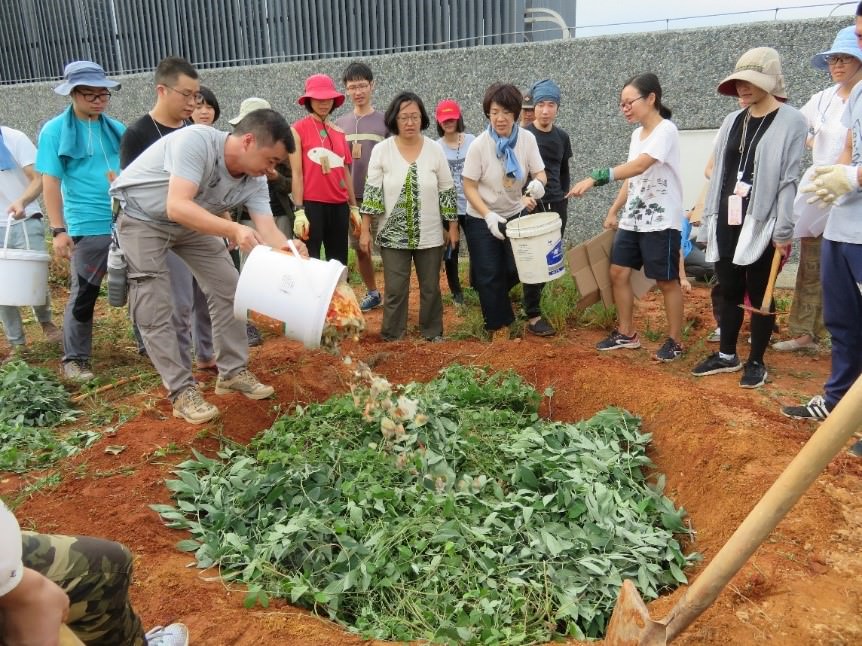
Permaculture Exercise: Firstly, dig a hole, pour the food waste and mix with garden wastes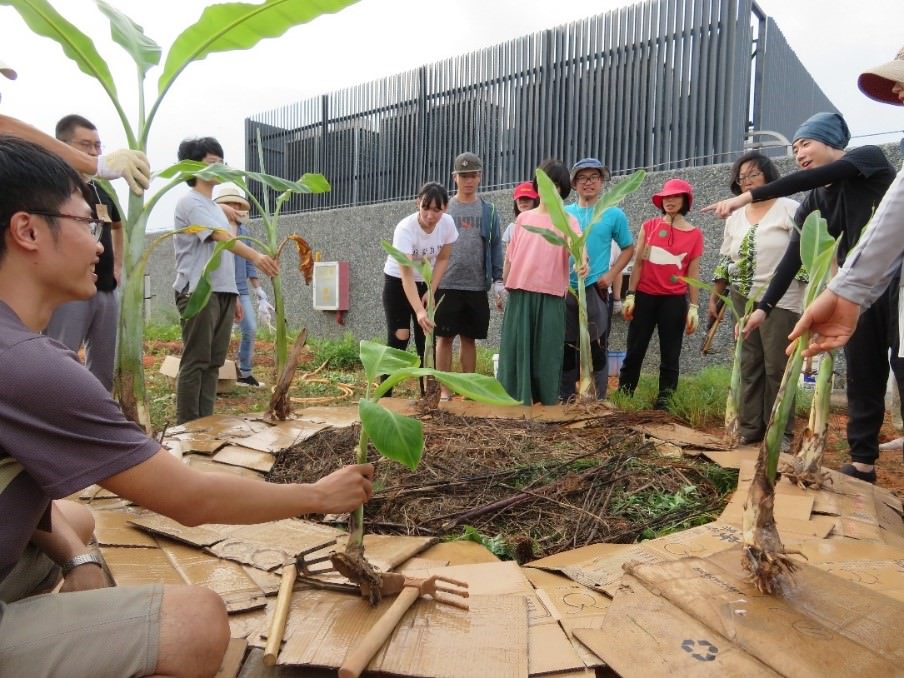
Secondly, cover them with mulch, then plant some bananas and sweet potatoes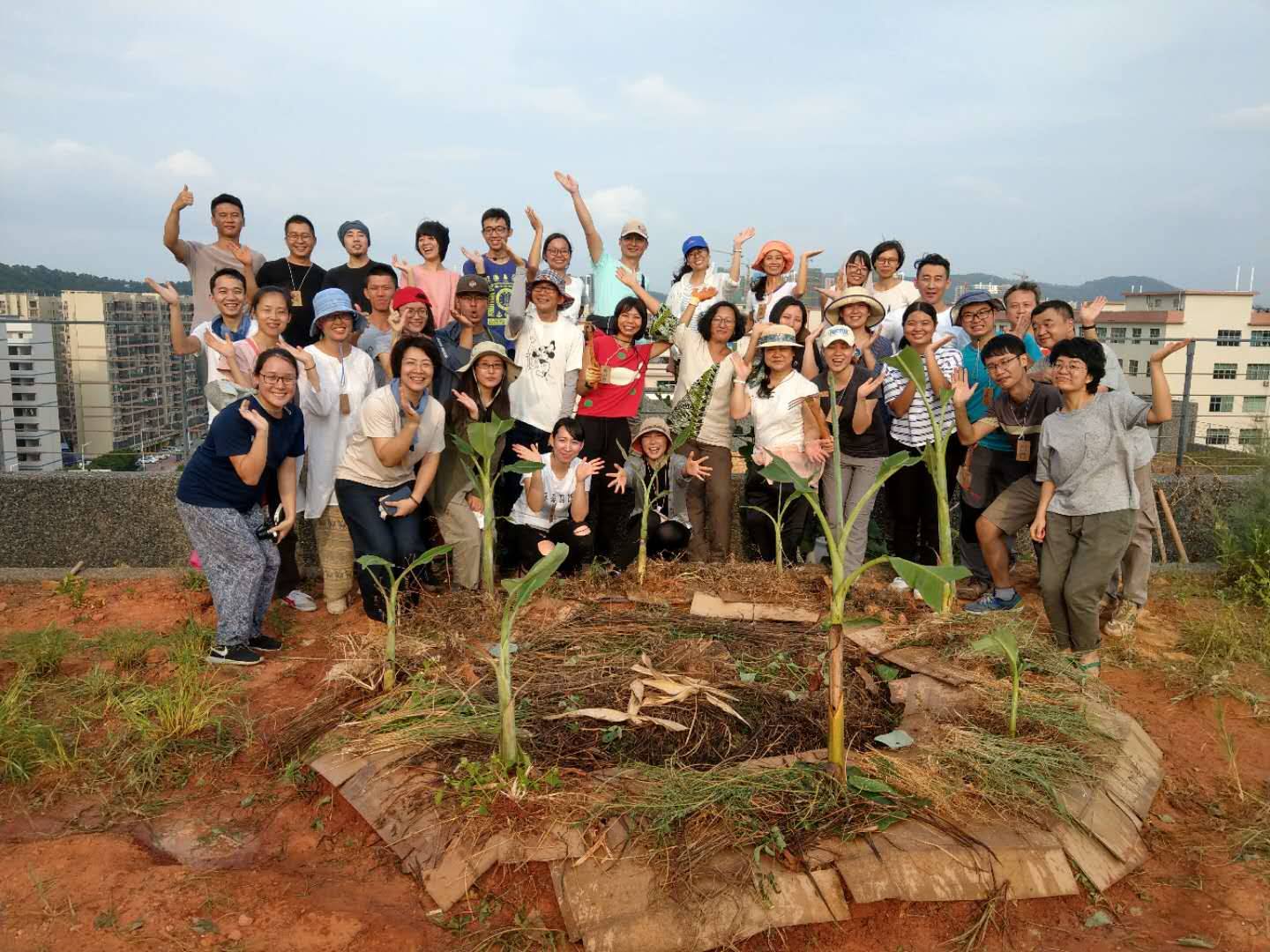
The completed “Banana Circle”!
The food waste will decompose and release nutrients for the crops. Together with sunlight, rain and air provided by nature, bananas and sweet potatoes will be ready to harvest in several months! Planting this “Banana Circle” is easy, as long as we make careful observations and link up the inputs and outputs with creativity. When we put “waste” in the right place, it is actually a resource!
 My group demonstrating the “Sweet Olive-Rabbit Circle” design
My group demonstrating the “Sweet Olive-Rabbit Circle” design
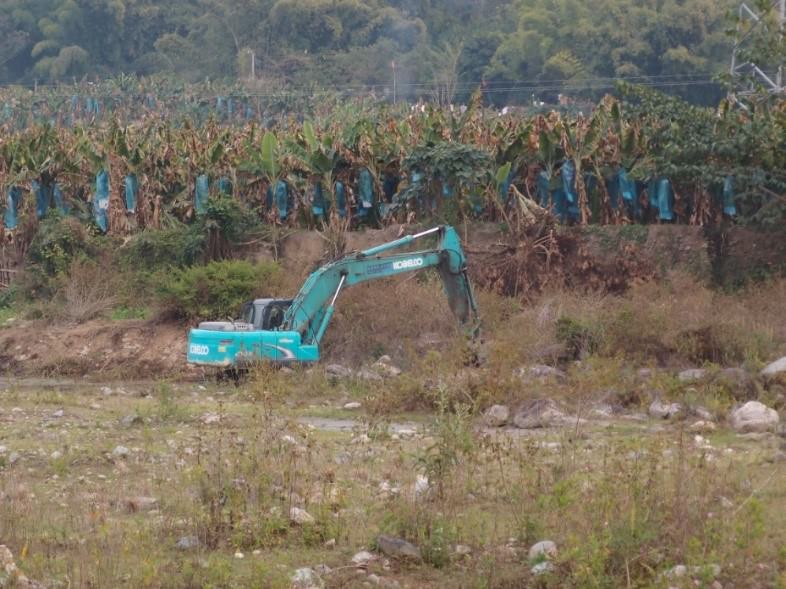
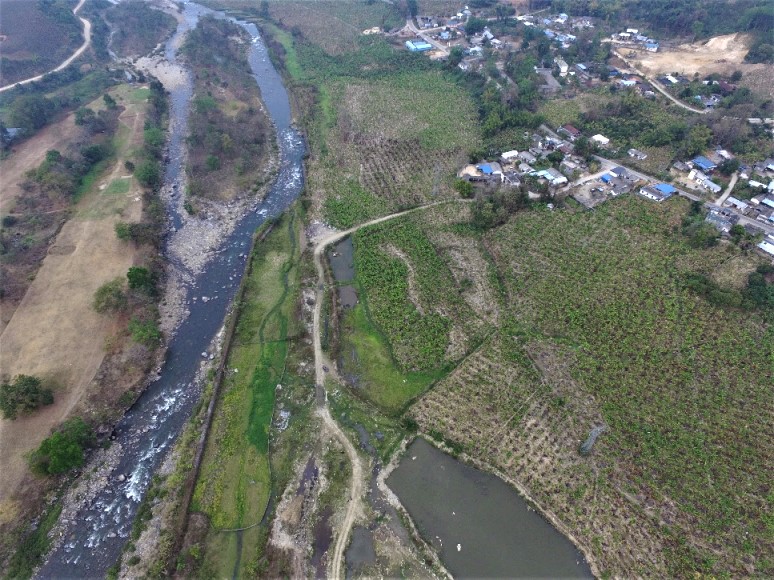 Photos of banana monoculture taken in Nabang Wetland in Yingjiang, Yunnan. It is imposing severe and adverse environmental impacts on the important bird habitat.
Photos of banana monoculture taken in Nabang Wetland in Yingjiang, Yunnan. It is imposing severe and adverse environmental impacts on the important bird habitat.
Nevertheless, banana is the main income source of the villagers. Is there any way that can strike a balance between the needs of people and the environment?
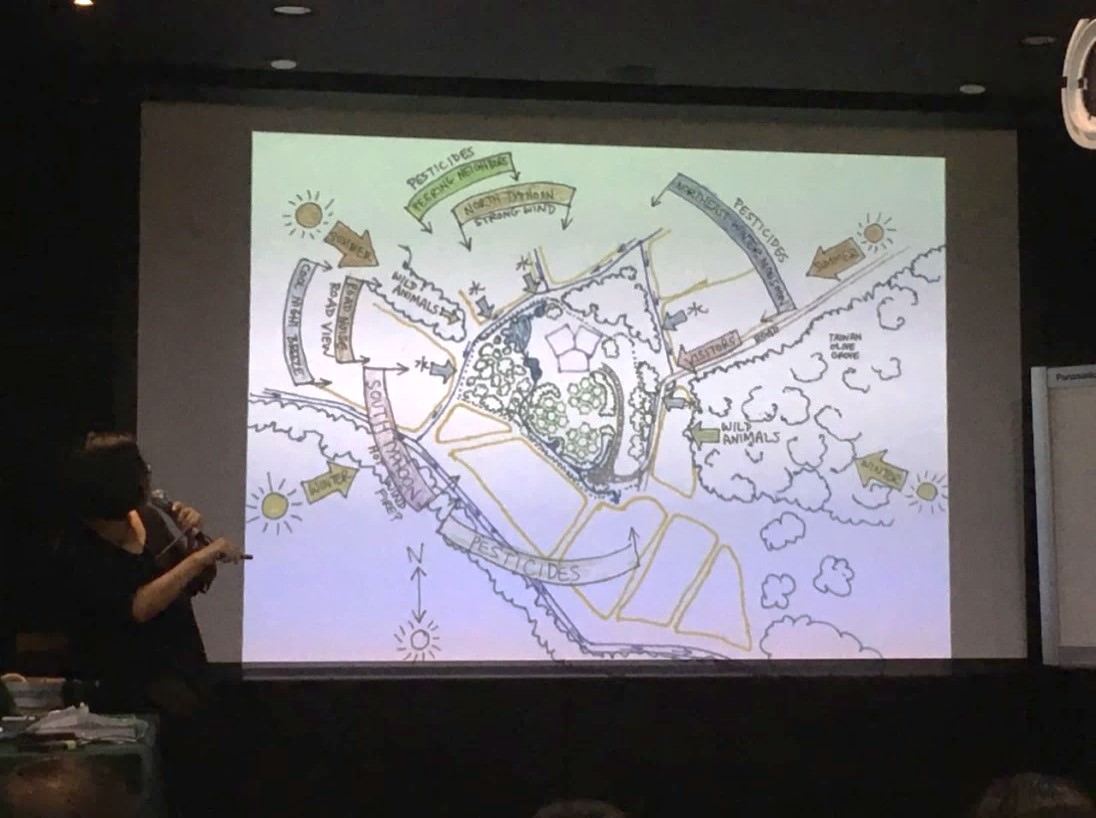
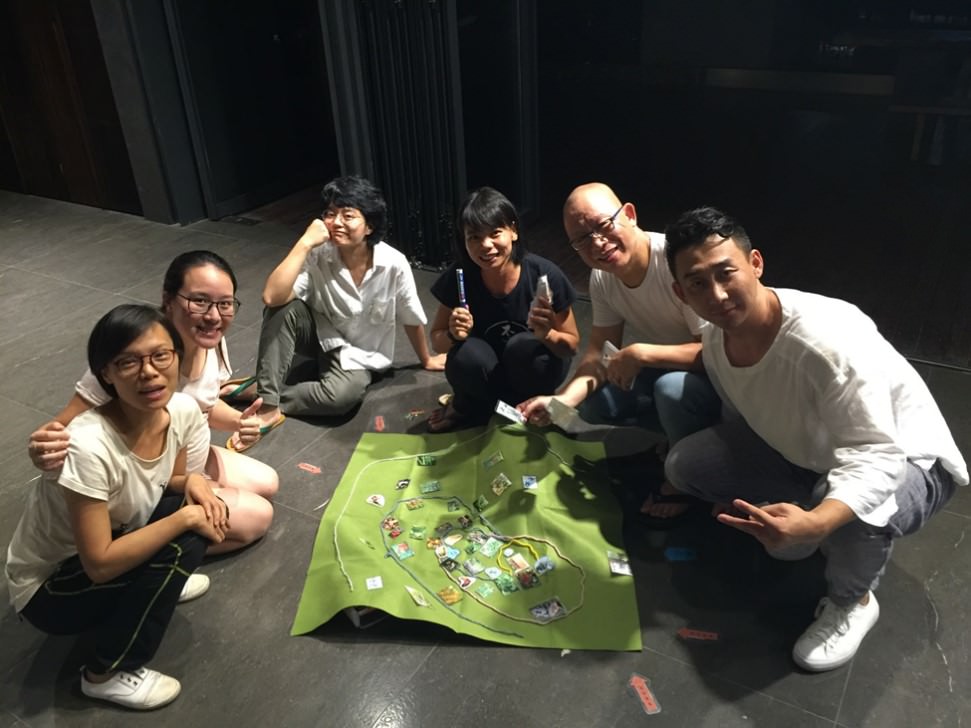 We are practicing permaculture farm design with zone and sector planning. We studied the topography and put elements in different zones based on input intensity and relationships among themselves.
We are practicing permaculture farm design with zone and sector planning. We studied the topography and put elements in different zones based on input intensity and relationships among themselves.
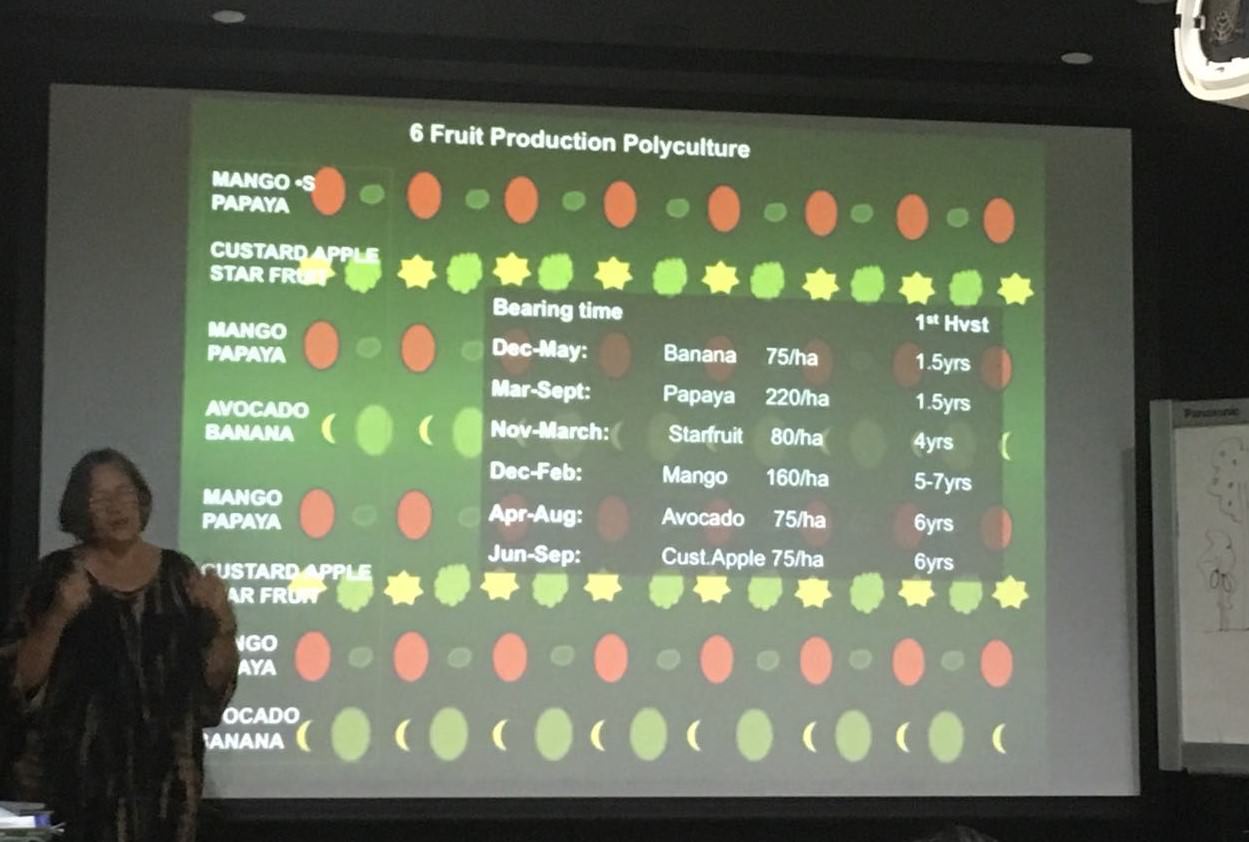
Robyn is introducing polyculture which can increase biodiversity, while increase income and reduce risk of farmers.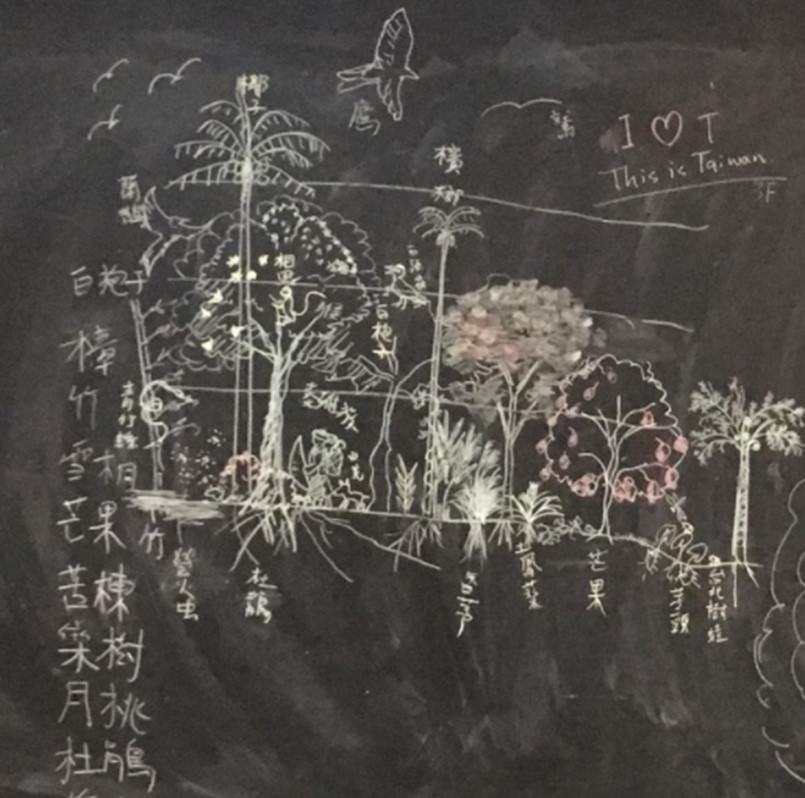
A multi-layered fruit forest designed by Taiwan participants.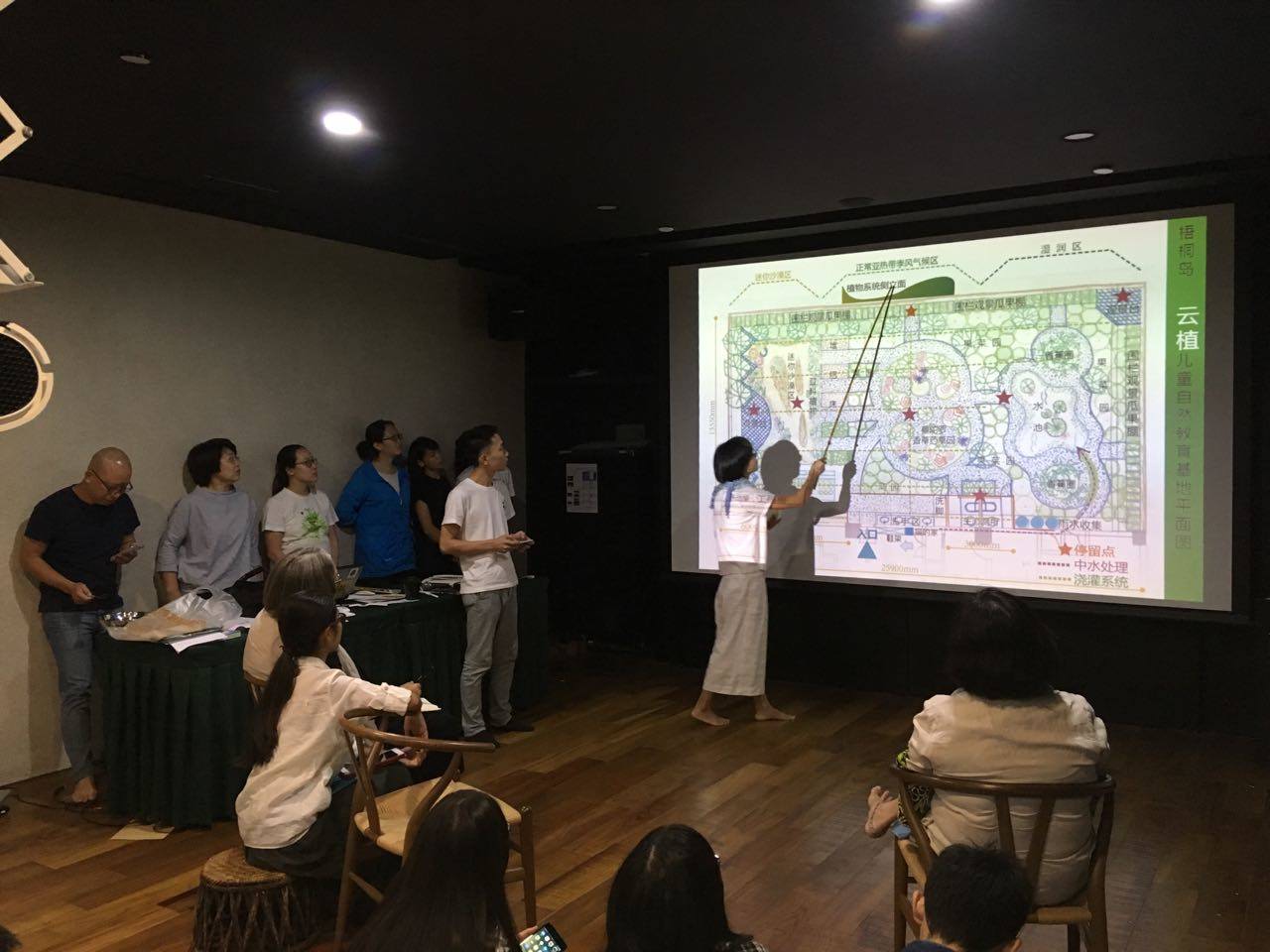
Our group presenting our final design project: Children’s nature education center on the rooftop of Wutongdao, with a name that means “Planting in the Clouds”.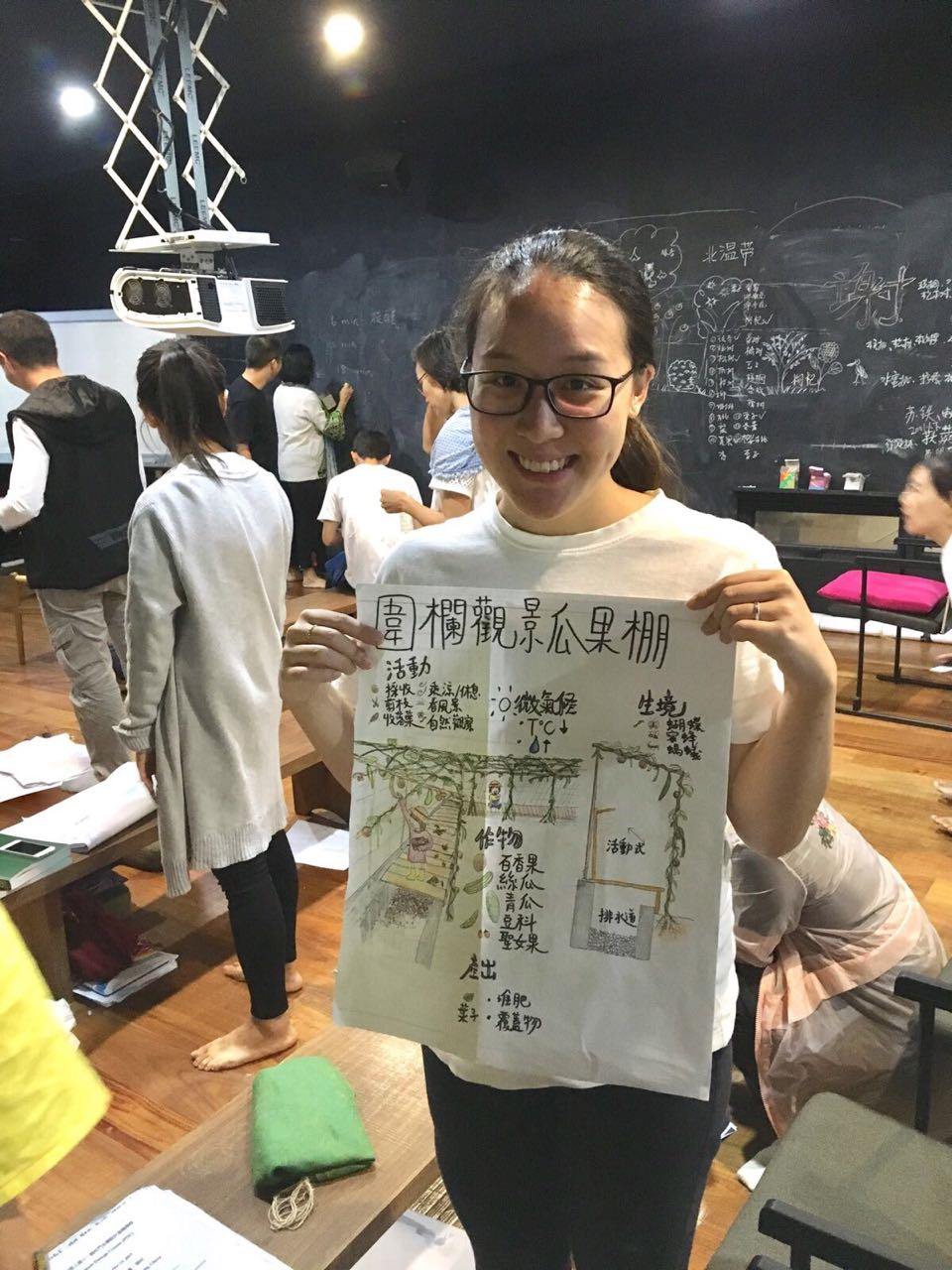 My fence design that allows children to enjoy the scenery, harvest beans and fruits, and rest under shade.
My fence design that allows children to enjoy the scenery, harvest beans and fruits, and rest under shade.
We were exposed to a wide range of subjects in this 14-day intensive Permaculture Design Course, and gained a lot of knowledge and inspiration. We believe there are many things we can do to harmonise people with the degrading environment through applying concepts of permaculture, from our small balcony at home to community-scale or even city-scale planning. What is more, there are so many like-minded people around us! And we are looking forward to seeing the creative permaculture systems from all over the world in the future!  Group photo of our permaculture class
Group photo of our permaculture class
Author: Joanne Li (Assistant Agro-ecosystem Officer of Kadoorie Conservation China Department)

